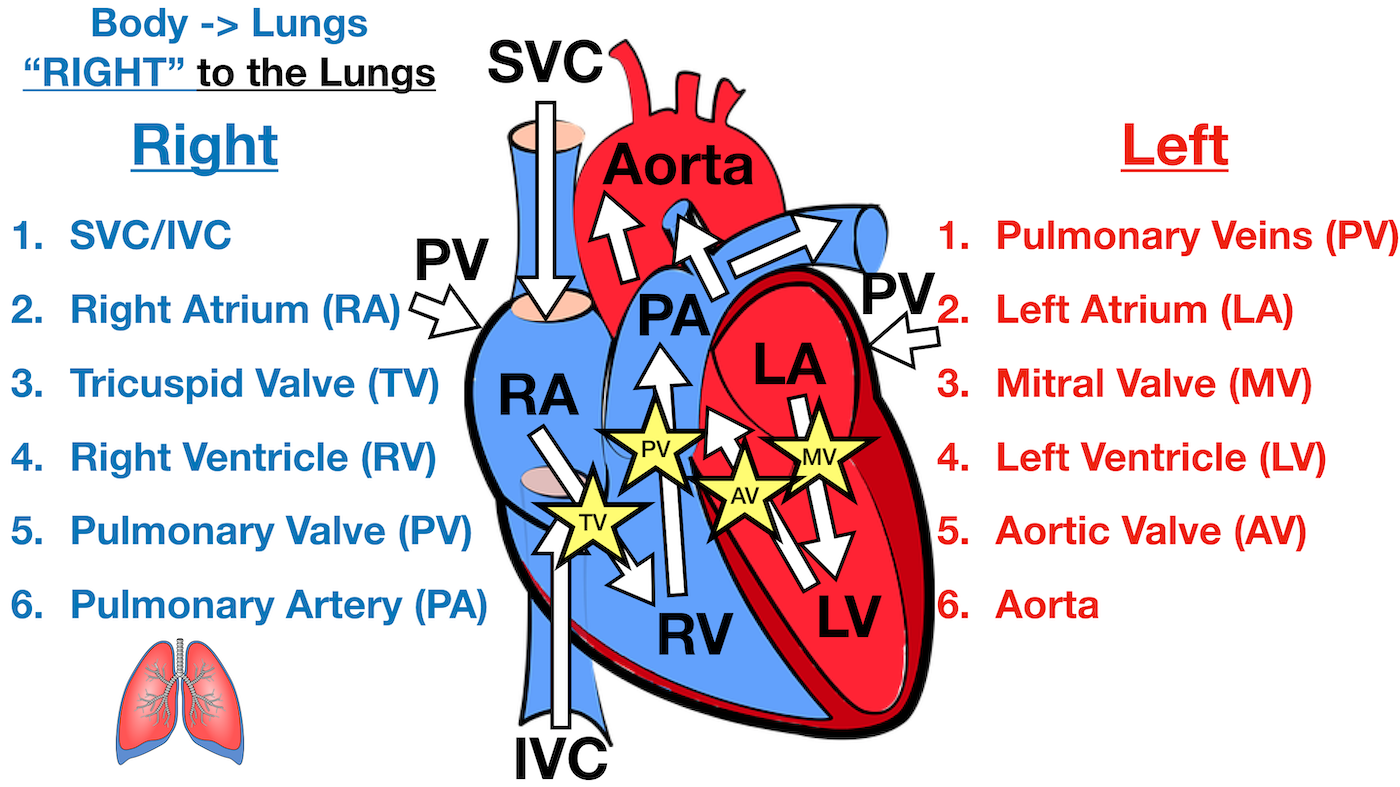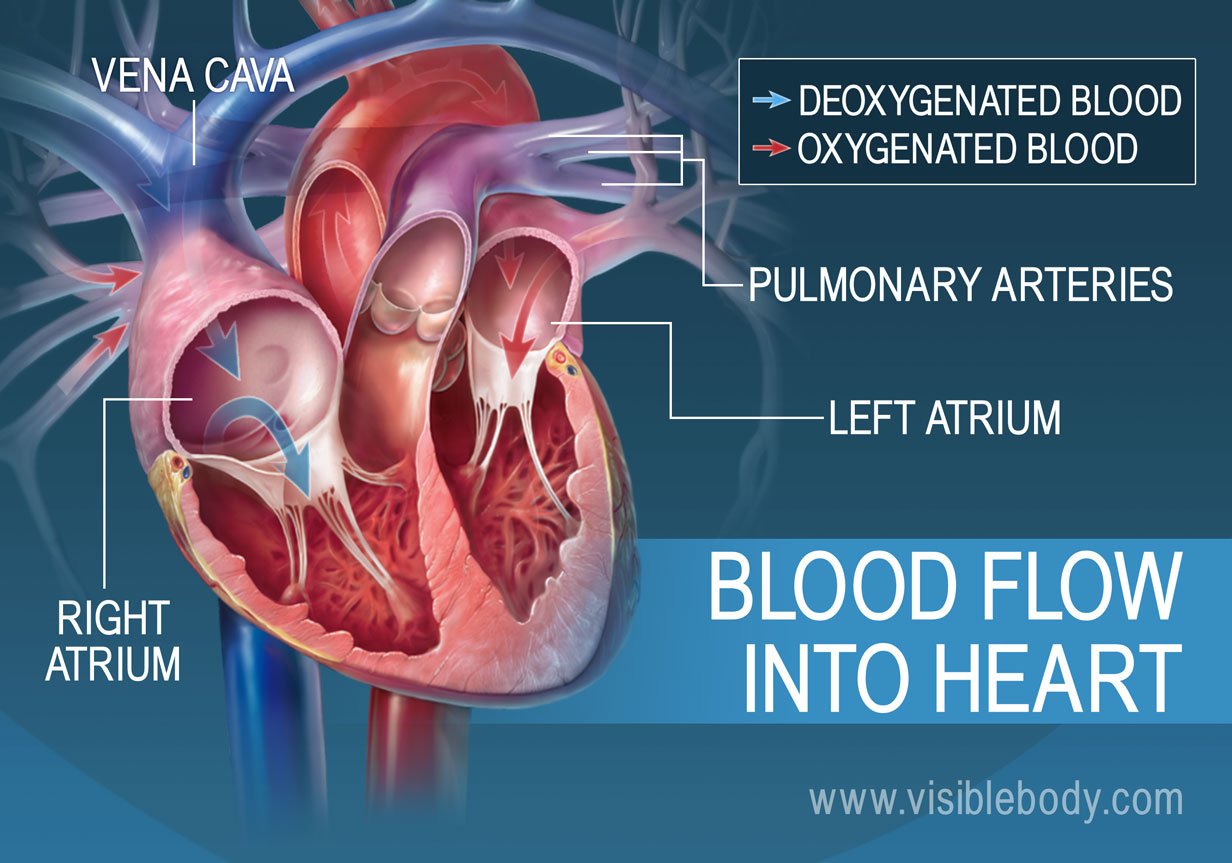Which of the Following Statements Best Describes Deoxygenated Blood
Which of the following statements best describes the function of veins. The driving force of the blood flow and pressure Bentry rooms to the heart that fill with blood between beats CThe site of nutrient exchange to tissues D.

Which Of The Following Structures Ultimately Drains Deoxygenated Blood From Heart Musculature Through Coronary Vein Into Right Atrium
Deoxygenated blood flowing through the pulmonary veins is carried to the right atrium.

. It involves the inhalation and exhalation of gases into the environment c. Arteries are blood vessels that always carry oxygenated blood. A Air moves in and out of the alveoli during breathing.
Arteries are blood vessels that always carry deoxygenated blood. They are identified as the pulmonary circuit and the systemic circuit. D Oxygen diffuses from alveolar air into.
Question 35 Which of the following factors does not directly contribute to the resistance to blood flow through a blood vessel. Thus option c is correct answer. - 10865057 marianjoymission marianjoymission 13022021 Science Elementary School answered Which statement best describes capillaries.
Pulmonary arteries and venous system except for pulmonary veins. Which of the. Arteries are strong elastic vessels that carry oxygenated oxygen-rich blood away from the heart to the other tissues of the body under high pressure.
Which of the following statements best describes the function of the left side of the ventricle. It pumps oxygenated blood around the body via the systemic circuit. Veins carry blood away from the heart.
Pulmonary arteryall veins except pulmonary vein and the right chambers of the heart contains deoxygenated blood which is usually dark red in colour. Which of the following statement is NOT true about the blood vessels. Solve the following problems.
RBC exchanges oxygen with carbon dioxide as they are now known as deoxygenated RBC. The deoxygenated RBC then travels through the venules veins and return. Valves prevent the backflow of blood into the atria and ventricles.
An artery is a blood vessel that only. Arteries are blood vessels that carry blood away from the heart. It affects oxygen affinity and oxygen- carrying sulfur capacity It reduces the oxygen affinity and the oxygen-carrying capacity It increases the oxygen affinity but does not affect the oxygen-carrying capacity It reduces oxygen affinity but does not affect the oxygen- carrying.
___ are tiny blood vessels that carry blood to an from almost all body cells and connect arteries and veins. Nephrons are the basic filtering units of kidney each kidney poses a large number of nephrons approximately 1to 15 million the main components of a nephron are glomarous Bowmans capsule a long renal tubule collecting duct. Its going to be kidneys.
Arteries are blood vessels that exchange nutrients. I Left atrium receives oxygenated blood from different parts of body while right atrium receives deoxygenated blood from lungs. Acarry deoxygenated blood to brain bpotect our body from harmful bacteria cremove waste that stay in the veins.
Veins carry deoxygenated blood. Veins carry oxygenated blood. Complete the following statement.
The bodys blood-transporting system. As the right ventricle contracts it sends oxygenated blood through the aorta to all tissues of the body. The bodys blood-transporting system.
C Oxygen and carbon dioxide diffuse down their concentration gradients between blood and alveolar air. The pulmonary circulation is the portion of the circulatory system which carries deoxygenated blood away from the right ventricle to the lungs and returns oxygenated blood to the left atrium and ventricle of the heart. Carries blood away from the heart.
The Circulatory System. The driving force of the blood flow and pressure Bentry rooms to the heart that fill with blood between beats. All of the above.
It exchanges gases between the blood and the air in an environment d. Returns blood to the heart. Blood comes into the right atrium from the body moves into the right ventricle and is pushed into the pulmonary arteries in the lungs.
Which of the following statement s is are true about heart. It maintains proper blood level pH. Functioning of nephron the blood enters the kidney through a long renal artery which branches into Many capillaries associated with the.
Which statement best describes capillaries. Which of the following statements best describes the function of arteries. I The left atrium receives oxygenated blood from different parts of the body while the right atrium receives deoxygenated blood from lungs ii Left ventricle pumps oxygenated blood to different body parts while right ventricle pumps deoxygenated blood to lungs iii Left atrium transfers oxygenated blood to.
Which of the following statement s is are true about the heart. Veins carry blood back to the heart. Only pulmonary arteries carry deoxygenated blood from the heart to the lungs under low pressure which make the pulmonary arteries unique.
Blood circulates through the heart in two ways. Which of the following best describes the process of gas exchange in the lungs. Which of the following chambers pumps blood toward the lungs.
B Carbon dioxide diffuses from deoxygenated blood in capillaries into the alveolar air. Which of the following statements best describes the effect of increased carbon dioxide pressure in the blood. Which of the following statement best describes the primary function of the respiratory system.
It transports oxygen and carbon dioxide to cells all over the body. Which best describes the atria of the heart. Ii Left ventricle pumps oxygenated blood to different body parts while right ventricle pumps deoxygenated blood to lungs.

Blood Flow Through The Heart Step By Step Diagram

In The Heart What Separates The Oxygenated And Deoxygenated Blood A Ventricle B Vessel C Septum Brainly Com

Comments
Post a Comment